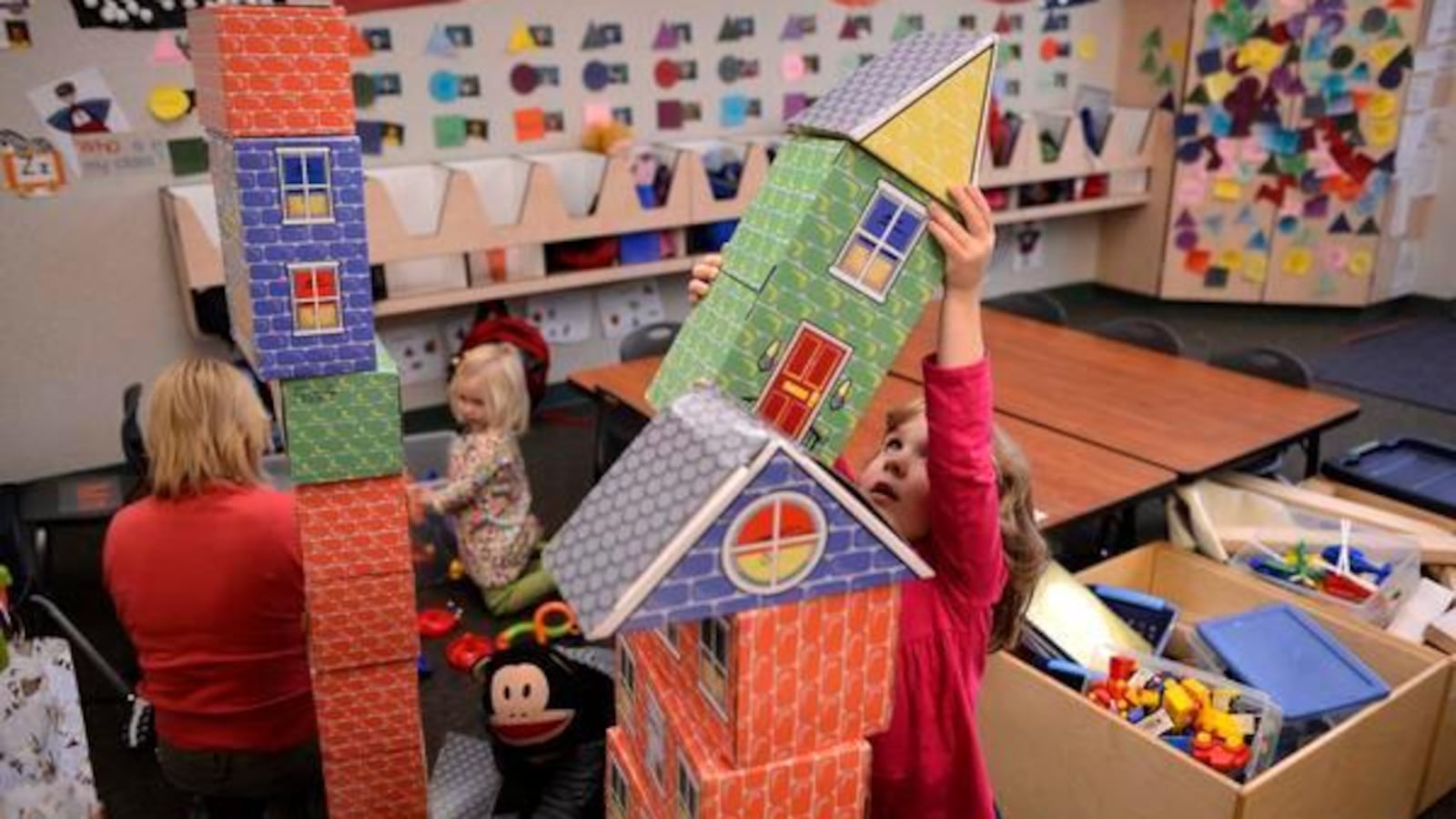Two studies suggest that bringing together children from low- and higher-income families in early childhood settings — an arrangement that rarely happens — could help bridge achievement gaps.
The benefits of socioeconomic integration is well documented among school-aged children, but it is just beginning to be explored among the preschool and younger set — in part because child care in the United States tends to be divided along class lines. Yet some research suggests that the same promise exists for the youngest students as it does when older children are integrated by family wealth.
One study in Connecticut found that children from low-income families in economically integrated preschool demonstrated much larger language growth than their counterparts in classes primarily composed of children from low-income backgrounds.
A larger study from the National Center for Children and Families at Columbia University looked at data from 11 prekindergarten programs and found that children in classrooms with, on average, a higher socioeconomic status generally learned more than those in classrooms made up primarily of children from low-income backgrounds — an association that held true regardless of a child’s own background.
This study, which controlled for factors such as teaching quality, discovered that all children can benefit from socioeconomically diverse classes. Children in relatively high-wealth classrooms that had some socioeconomic diversity fared better in gaining skills related to understanding language than those in high socioeconomic classrooms with little income diversity.
In New York City, staff at the handful of child care centers that have successfully brought together children of different economic backgrounds say the benefits extend not just for the children. Even when the income difference among families is modest — and even when the overall socioeconomic status of the class might be low-income — parents of different backgrounds learn from each other and staff benefit from having a range of families, from those who might need support beyond child care to others with resources to offer.
This is one reason why Head Start programs, which are designed for preschoolers of families living in poverty, reserve a few spots for families above the poverty line as well.
In 2010, when New York City was gearing up to reform its subsidized child care system under an initiative called EarlyLearn, an early vision of the reform encouraged subsidized child care centers to enroll some children whose families were not eligible for subsidized care, and who would pay privately as a way to “better serve children and ensure the economic sustainability of the system,” as well as “to be reflective of the community served.”
The 2011 Request for Proposal made the same request “to promote socio-economic diversity.” It also promoted classrooms filled with both children whose families were eligible for subsidized child care — or had incomes within 275 percent of the federal poverty line — and children whose families lived in poverty, meeting the eligibility requirements for Head Start.
In the end, that vision has gone largely unrealized, with most EarlyLearn centers having separate classrooms earmarked for either Head Start or subsidized child care.
Meanwhile, some subsidized centers do enroll private paying families, but they receive little guidance from the city on how to make it work. Some centers mix students from different backgrounds in the same classes, but in part to ease record-keeping and compliance with various regulations, others keep the children whose parents pay privately in separate classrooms from the children whose families receive subsidy for child care — creating economic segregation, rather than integration, within the centers.
“There have been so few resources provided to early childhood leaders in terms of program development,” says Laura Ensler, founder of the FirstStepNYC early childhood center in Brownsville, Brooklyn. “Program quality comes from creating a diverse population.”
This story is adapted from a forthcoming report by the Center for New York City Affairs at the New School that looks at subsidized infant and toddler child care.

